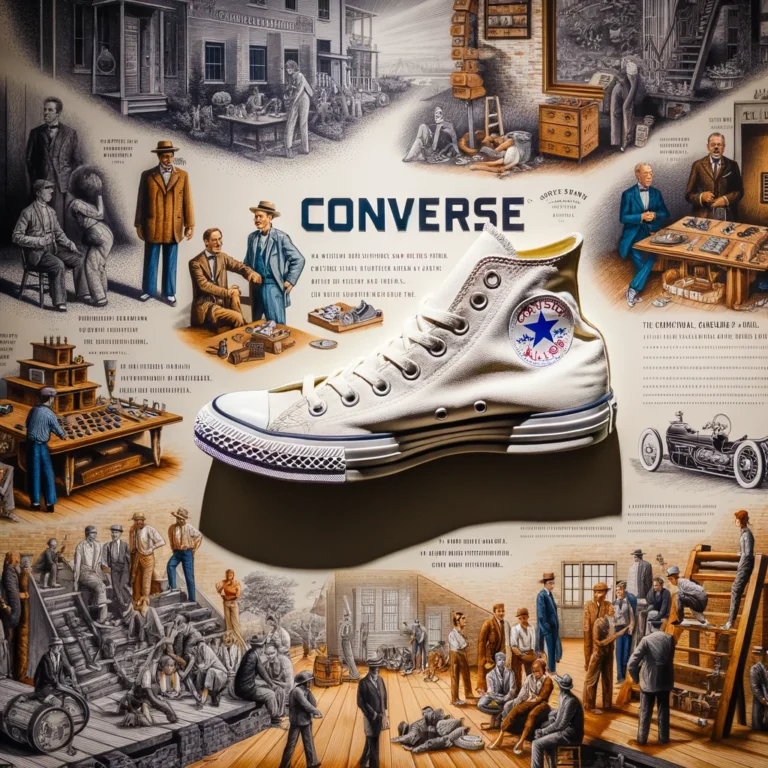Converse was founded in 1908 by Marquis Mills Converse in Malden, Massachusetts, originally as the Converse Rubber Shoe Company. Initially, the company focused on winterized rubber-soled footwear, but it wasn’t long before they ventured into the world of athletic shoes. In 1917, Converse introduced the “All-Star,” a basketball shoe that would eventually become one of the most iconic sneakers in history.
The Chuck Taylor Influence
In 1921, Charles “Chuck” Taylor, a semi-professional basketball player, joined the company as a salesman. Taylor’s enthusiasm for the shoes and his extensive promotional efforts led to significant modifications and improvements in the design. By 1932, his signature was added to the ankle patch of the shoe, rebranding them as the “Chuck Taylor All-Stars.” These shoes quickly gained popularity and became the standard for basketball players across the United States.
Dominance and Decline
Converse All-Stars were the official basketball shoe of the Olympic Games from 1936 to 1968, and during World War II, they were the official athletic shoe of the U.S. armed forces. By the 1960s, Converse controlled about 80% of the sneaker market. However, the rise of competitors with better technology and marketing strategies, such as Nike, Adidas, and Puma, led to a decline in Converse’s dominance in the sports world by the 1970s.
Despite this decline, Converse sneakers found a new life in the music and fashion scenes. They became a symbol of rebellion and individuality, worn by artists like Kurt Cobain of Nirvana, members of the punk rock band The Ramones, and hip-hop artists like Ice Cube. The shoes’ appeal extended beyond musicians, appearing in popular films and TV shows, further embedding them in American pop culture.
Bankruptcy and Rebirth
The financial troubles of the late 20th century led Converse to file for bankruptcy multiple times. In 2001, the company was bought out and restructured, eventually leading to its acquisition by Nike in 2003 for $305 million. Under Nike’s management, production was moved overseas, reducing costs and revitalizing the brand.
Modern Era
Today, Converse continues to be a significant player in the sneaker market, balancing its rich heritage with modern trends. The brand has expanded its product line to include various styles and special editions, such as collaborations with contemporary artists and designers. The Chuck Taylor All-Star remains a bestseller, beloved for its classic design and cultural significance.
Converse has embraced sustainability initiatives and modern marketing strategies, ensuring its relevance in the fast-paced fashion industry. With a blend of history and innovation, Converse stands as a testament to enduring style and adaptability.

